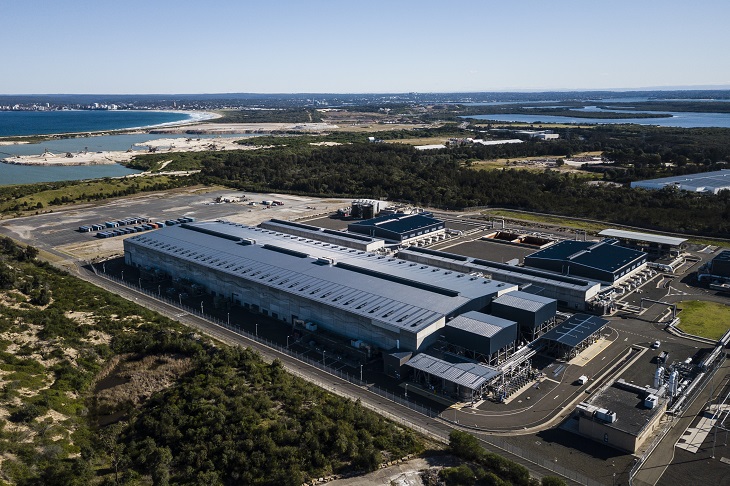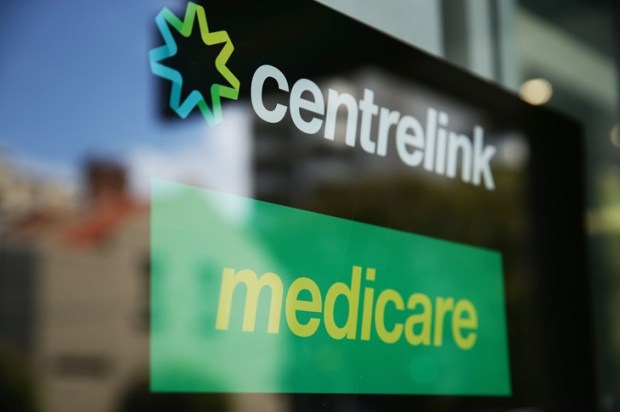With the return of Premier Palaszczuk, overdue decisions will need to be made about water supply for the South-East corner of Queensland. Nine months ago, SEQ Water advised that the population growth had brought forward likely water shortages to as early as 2024.
Australia has, throughout its history, been a land of drought, floods, and fire. It is recognised as the driest inhabited continent in the world. With another El Niño event looming, the country’s rapidly expanding population, (the latest estimates have increased from 33 to 36 million by 2050) is putting pressure on water availability. Rather than building new dams, it seems the option of desalination plants is back on the agenda, as Queensland re-invents a previous, failed policy.
Courtesy of La Niña, we have recently had heavy rainfall, with multiple floods ensuing. Much of this water has drained out to sea. As in previous events, water is progressing to Lake Eyre and is likely to compete with the La Niña filling of 1974; the lake has only filled 4 times in 100 years. Fortunately, much of this rain has at least filtered through the ground into the Great Artesian Basin and, no thanks to politicians, has been conserved. This 1.7 million square kilometre reserve is up to 3,000 metres deep and bore water has supplied a less populated country for many years. These ongoing natural events are made more pronounced, not by any changing climate, but by the demands of growing immigration. The current focus has been on housing shortage, but water (and electricity) supply are even more critical.
Apart from water capture, there are two other, sometimes forgotten, reasons for building dams. Flood mitigation is the first, with these events recently much in evidence on the East Coast of Australia. Second, is hydropower generation. This was once considered acceptable, as in the dysfunctional Snowy Hydro 2.o scheme, with its soaring cost and delays, but has otherwise been discounted. Past dam cancellations have been driven by environmental activism rather than practicality. The Tasmanian, Franklin Dam, intended for hydroelectric power, was cancelled in 1983 following prolonged activism. The Wolffdene Dam, cancelled in 1989, would have flooded the Albert Valley and provided extra water for the current needs of South-East Queensland.
The Traveston Dam, again in SE Queensland, had included a project to dam the upper reaches of the Mary River and connect to other dams to supply Brisbane. The land had been bought and roads built around the area. Environmental arguments resulted in a delay of 4 years and ultimate cancellation by the Federal Labor Government in 2009. The projected cost of the build had been $1.7 billion, eventually, nothing was achieved – for $460 million. Plans to raise dam heights around Sydney have been similarly thwarted by environmentalists, leading to uncontrolled flooding and future water shortages as the population expands.
The authoritative comments of Tim Flannery, that dams would never fill again, were taken to heart by environmentalists during the prolonged drought period from 2006 to 2012. Desalination plants were completed in all coastal capital cities, except in those with secure rainfall or inland location – Tasmania, ACT, and Northern Territory. Perth and Adelaide had always had less water security, with no access to the Artesian Basin bore water. The total cost of constructing the 6 plants was over $9 billion, with significant ongoing maintenance costs.
The alternative option to dams is to convert seawater by reverse osmosis into fresh water, but it is energy-intensive. With Australia’s environmental concerns, additional renewable energy supply is also needed, adding to the cost. Currently, the world’s largest desalination plants in the Middle East are powered by oil and gas because, unlike Australia, power is still cheap there and there is no concern about climate change.
In the rush to provide water security with the previous drought, the first desalination plant was completed in 2006 in WA, at a cost of $400 million, capable of supplying 17 per cent of Perth’s population. It was followed up by a second, completed in 2012, for $1.4 billion, adding another 29 per cent capacity. A wind farm was completed in 2013 at a further cost of $200 million, capable of supplying 180GWh of electricity to offset the energy demands of the plants. Perth has little groundwater and these plants have been in continuous operation, in 2013 providing an average 29 per cent of the city’s needs, with running costs of $70 million annually. A 2022 review has recommended doubling the capacity at an additional cost of $320 million.
Adelaide, like Perth, has limited access to groundwater and, with the uncertain flows from the Murray River, is more vulnerable to drought. Its desalination plant was completed in 2012 at a cost of $1.8 billion and is big enough to supply 60 per cent of the city’s need. The plant operated from 2012 to 2016 supplying around 20 per cent, and again from 2019 as flows down the river were reduced for conservation purposes; current output has again increased, reducing demand on the river. Its maintenance cost is $130 million annually.
Brisbane Dam water storage had fallen to 20 per cent by 2007; the plant, built on the Gold Coast for $1.2 billion, was predicted to supply 18 per cent of the city’s needs. By the time of its completion in 2009, dam levels had risen to 80 per cent, increasing to 100 per cent by 2010. On completion, the plant was mothballed and has been little used. Running costs, when not in use, are estimated at $15 million annually. It was restarted in 2020 to pump water to the main Wivenhoe Dam, which had missed rainfall and was at 40 per cent. Subsequently, that dam was full to overflowing, with all other Brisbane dams at 100 per cent capacity. Despite its lack of use, plans were announced in 2020 to double the plant’s capacity. In 2022 these plans were cancelled, with a new option to instead build a plant on the Sunshine Coast.
Sydney’s dams were 100 per cent full in 1998, by 2007 levels had fallen to 34 per cent. NSW completed its desalination plant in 2010 for $1.9 billion, capable of supplying 17 per cent of the city’s requirements and electricity was offset by construction. The plant was used briefly from 2010 to 2012, by which stage dams were at 80 per cent capacity; the dams subsequently overflowed in 2012, 2016 and 2021. When not in use, maintenance costs are $600,000 a day, an estimated cost per household of $90 per year.
Melbourne water storage fell as low as 25 per cent in the drought but, by the time of plant completion in 2012, at a cost of $3.5 billion, levels had recovered to 80 per cent. It can supply 37 per cent of the city’s needs and was briefly used in 2017, and again in the next 2 years. The cost to the residents is reputedly a staggering $600 million a year, 16 per cent of the State’s GDP.
Most cities have been saddled with billions of dollars in construction and ongoing maintenance costs, for little purpose. As the population is now expected to reach 36 million by 2050, new dams are required for water security and flood control. The plan to build a new large dam at Urannah, flooding the Broken River Valley in Central Queensland was to irrigate 20,000 hectares of land, provide water for mining and urban use and generate electricity. It took 40 years to get that far, and has now been cancelled by the federal government because of ‘threat to the Great Barrier Reef, and inadequate consultation with traditional owners’.
A survey in 1988 suggested the cost of desalinated water was between five and ten times standard costs. Subsequent surveys elsewhere have suggested desalinated water is about twice the price of recycled water and five times that from dams, with variation depending on the cost and availability of electricity supply.
Had we built dams, we could have reduced flooding, increased hydroelectricity generation and provided water security for agriculture and future population demands. Instead, we are looking at alternative environmental destruction to build renewable energy to power desal plants. Politicians, who succumbed to the activists’ and environmentalists’ ideology should bow their heads in shame. As population expansion is actively promoted, the failed desalination option is back on the agenda, politicians refuse to consider the only other, currently politically unacceptable but much cheaper alternative, of water recycling.
With the South-East Queensland population predicted to expand from under 4 to 6 million by 2046, water is the most fundamental of planning priorities. Additional supplies were thought to be needed as early as 2030, this may now be as early as next year. The dam proposals have been shut down by environmentalists. The Gold Coast desal plant has been on care and maintenance since 2013 and it would take 2 years to recommission the never used, and politically challenging, Western Corridor Recycling scheme (original cost $2.5 billion). The latest plan, a new desal plant on the Sunshine Coast, is projected to cost of between $4 and $8 billion. This would add 15 per cent to water bills, already the most expensive of any state.
More water is just one of the many expensive infrastructure demands immigration will require. It is overdue time to reconsider the consequences and alternatives to this latest plan. Currently, the only practical choices for future adequate water supply are recycling, or the long-neglected dam building. Had we made progress with nuclear-powered electricity generation, it could have provided the extra electricity the population will need, as well as power for desalination.
The writing is on the wall, does the government have the intestinal fortitude to reconsider all of these options?
Got something to add? Join the discussion and comment below.
Get 10 issues for just $10
Subscribe to The Spectator Australia today for the next 10 magazine issues, plus full online access, for just $10.


























Comments
Don't miss out
Join the conversation with other Spectator Australia readers. Subscribe to leave a comment.
SUBSCRIBEAlready a subscriber? Log in